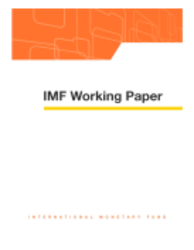
Capital Account Liberalization, Capital Flow Patterns, and Policy Responses in the EU's New Member States
This paper discusses the experience of the EU's eight new member countries (EU8) between 1995 and 2003 when the bulk of capital account liberalization took place, focusing on interest-rate-sensitive portfolio flows and financial flows. It takes stock of the lessons from capital flow patterns to draw policy conclusions. There were two distinct groups in terms of the speed of capital account liberalization: rapid liberalizers and cautious liberalizers. The speed of disinflation and the level of public debt were major determinants of the size of interest-rate-sensitive portfolio inflows. Monetary and exchange rate policies were the main instruments used to react to large interest-sensitive inflows, whereas fiscal tightening was seldom used as a direct reaction to inflows.
Publication date: November 2005
ISBN: 9781451862324
$15.00
Add to Cart by clicking price of the language and format you'd like to purchase
Available Languages and Formats
| English |
Prices in red indicate formats that are not yet available but are forthcoming.
Topics covered in this book
This title contains information about the following subjects.
Click on a subject if you would like to see other titles with the same subjects.
Money and Monetary Policy , EU accession , capital account , capital inflows , current account , Financial Markets and the Macroeconomy , Financial Aspects of Economic Integration
Also of interest
Summary
Copyright © 2010 - 2025
Powered by:
AIDC



